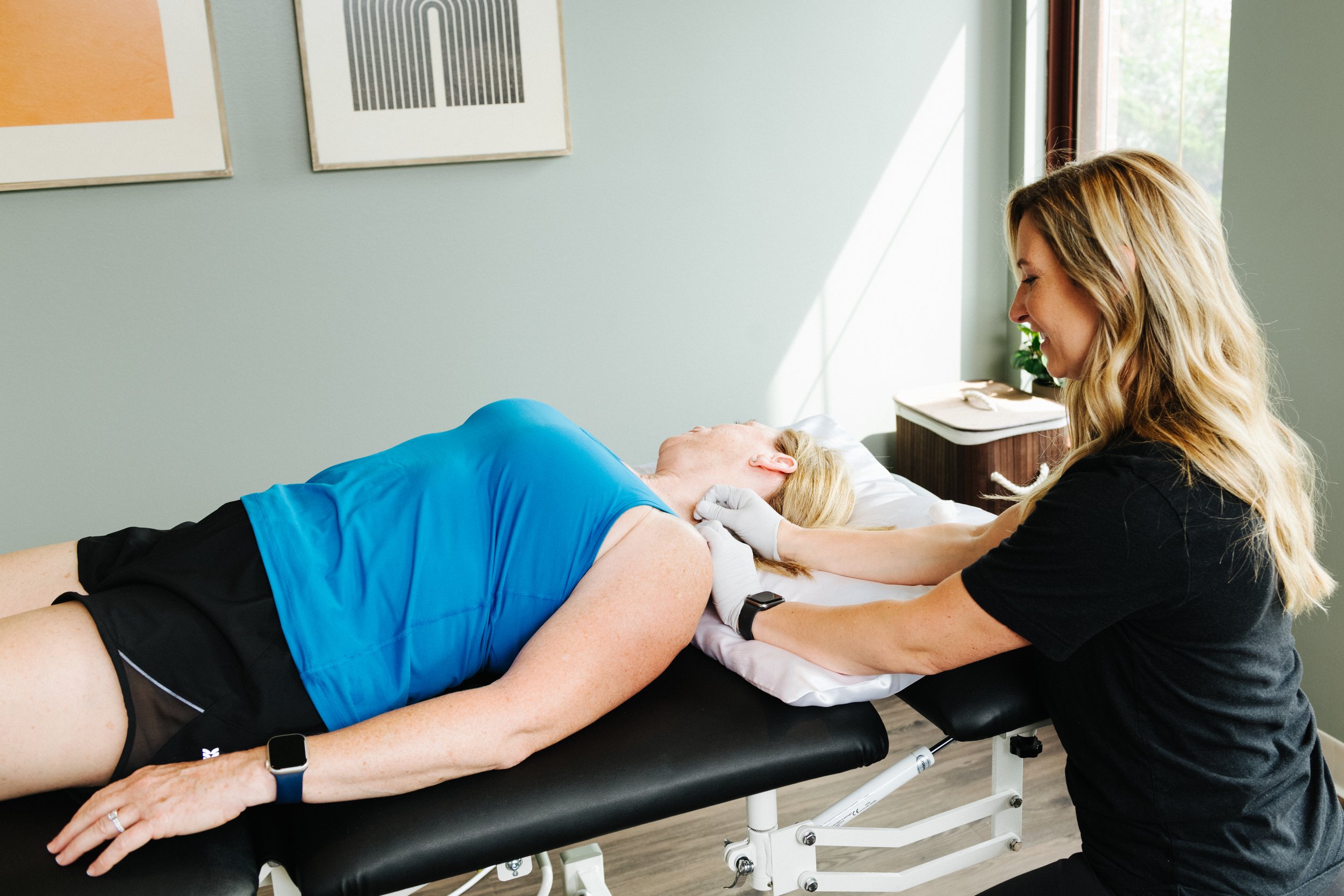ALL THINGS DRY NEEDLING
Q: What is dry needling?
A: Dry needling (DN) refers to the insertion of thin monofilament needles, as used in the practice of acupuncture, without injecting anything into the body. Dry needling can be used to treat “myofascial trigger points'' within muscles. Additionally, research also supports using DN to treat ligaments, tendons, subcutaneous fascia, scar tissue, peripheral nerves, and neurovascular bundles for the management of a variety of neuro-musculoskeletal pain syndromes and dysfunction (Dunning, 2014).
Q: Is it safe for me?
A: Dry needling is very safe when performed by therapists who are properly trained. Precautions are taken with every body region based on our knowledge of anatomy (lung field, blood vessels, etc). Additionally, your therapist will collect a thorough history to ensure dry needling is safe for you! Adverse effects are very rare (Boyce, 2020). Minor events such as bruising, mild bleeding, and soreness are normal.
Q: What does dry needling do for the body?
A:
Restores cellular muscle length and reduces muscle tone/tension → decreased trigger points
Releases natural opioids to reduce pain and discomfort
Stimulates collagen and fibroblast production for tissue repair
Prevents the breakdown of bone, therefore, improving bone density
Reintroduces the natural inflammatory response in a controlled manner to improve healing
Increases blood flow
Promotes scar remodeling
Electro-needling stimulates mesenchymal stem cells to release opioids and increase tissue healing
Winding (turning the needle when inserted) pulls on fascia/connective tissue to release adenosine. Adenosine:
Reduces the emotional response to pain
Increases blood flow
Stimulates restful sleep
Improves pain relief
Has anti-inflammatory properties
Q: What is the difference between dry needling and acupuncture?
A: Acupuncture literally translates to “needle penetration.” The use of monofilament needles to address dysfunctional tissues is shared across health professions. There are similarities between dry needling and acupuncture; however, each technique is formed out of different fundamental approaches.
Q: What can I expect with needling? Will it hurt?
A: There are several techniques we utilize with needling. Depending on your comfort level, we use fanning techniques, moving the needle in and out of the tissue; this typically lasts several seconds. Other techniques involve keeping the needles in the tissue for longer periods of time. Adding electrical stimulation through the needles is another additional option to promote healing and release tension.
Every patient’s experience with needling is different; it is completely dependent on each individual! Depending on the body region and the patient’s sensitivity, needling may temporarily recreate symptoms or muscle twitches which is actually a great indicator that we are treating the right tissue! DN often results in improved symptoms relatively quickly! Your therapist will learn your tolerance and dose the needles appropriately to give you the greatest benefit. We will always work with you based on your preferences and your response!
Q: How can it help me with my condition?
A: Dry needling can address nearly every musculoskeletal condition! Here’s a list of some of the conditions we commonly use dry needling for in our clinic:
Neck pain (pinched nerves, stiff neck) and Headaches
TMJ Disorders
Low back pain
Shoulder pain (frozen shoulder, rotator cuff, shoulder osteoarthritis)
Sciatica/Lumbar radiculopathy
Piriformis Syndrome
Gluteal tendinopathy/Greater Trochanter Bursitis
Hamstring strain
Knee osteoarthritis
Patellofemoral syndrome and tendinopathy/tendinitis
Golfer’s elbow
Tennis elbow
Carpal Tunnel
Shin splints
Ankle Sprains
Achilles tendonitis
Plantar Fasciitis
Neuropathies
Dry needling can reduce muscle tension and tightness in almost every muscle of the body. It can strengthen and repair tendons. It can promote healing, and it can improve pain and overall function to get you back to doing what you love and more! Call us today to find out if dry needling would be beneficial for you and schedule an evaluation!
RESOURCES:
Boyce D, Wempe H, Campbell C, et al. Adverse events associated with therapeutic dry needling. Int J Sports Phys Ther. 2020;15(1):103-113.
Dunning J, Butts R, Mourad F, Young I, Flannagan S, Perreault T. Dry needling: a literature review with implications for clinical practice guidelines. Phys Ther Rev. 2014;19(4):252-265.






